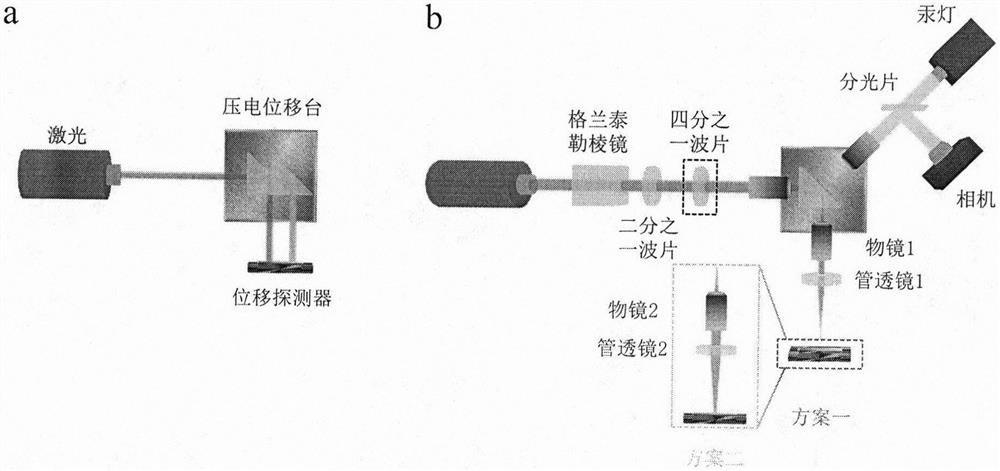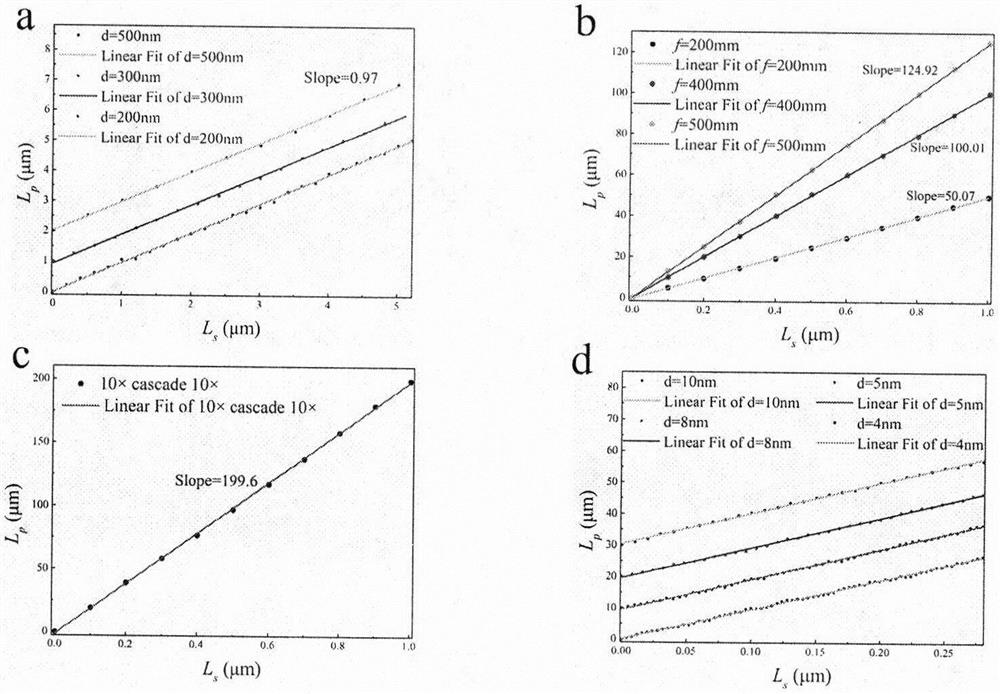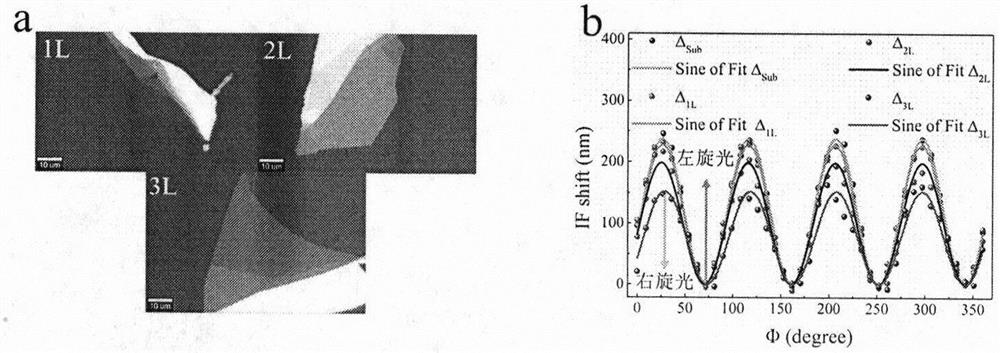Light beam displacement amplification technology
A technology of beam displacement and displacement, which is applied in the field of optical precision measurement and two-dimensional materials, can solve the problems that the amplification factor cannot be calculated, the application restrictions are many, and the amplification technology is lacking.
- Summary
- Abstract
- Description
- Claims
- Application Information
AI Technical Summary
Problems solved by technology
Method used
Image
Examples
Embodiment 1
[0017] Amplification Factor and Resolution Measurement of Displacement Sensor and Displacement Amplification Technology
[0018] like figure 1 As shown in the optical path of a, the original resolution of the position sensor is determined by the piezoelectric stage, from figure 2 It can be seen from the data in a that the minimum resolution step size is 200nm, and the slope is the amplification factor value of 0.97, indicating that the original resolution of the position sensor is 200nm and the displacement is not amplified. figure 1 The b optical path is a schematic diagram of the optical path of the displacement amplification technology. We have two schemes. The first scheme is a red box. Only the objective lens 1 is used for displacement amplification, and the displacement amplification factor is changed by changing the focal length of the tube lens 1. figure 2 b is the data schematic diagram of the objective lens 1 in scheme 1 with a 50x objective lens, and the focal le...
Embodiment 2
[0020] Molybdenum disulfide SHEL displacement measurement
[0021] image 3 a shows the preparation of 1 to 3 layers of molybdenum disulfide samples on the K9 substrate by the method of mechanical exfoliation. Its thickness has been determined by atomic force microscopy and reflectance spectroscopy. image 3 b is the displacement of the base and 1-3 layers of SHEL. It can be seen that the displacement is the largest when the incident light is right-handed, and the smallest when the incident light is left-handed. And the displacement difference between right-handed light and left-handed light gradually decreases with the increase of the number of layers.
Embodiment 3
[0023] Black phosphorus GH shift measurement
[0024] Figure 4 a shows the microscopic image of black phosphorus, which has in-plane anisotropy, and its crystal orientation has been marked by the arrow. like Figure 4 As shown in a, we measured the GH displacement in different crystal orientations. The p-polarized light displacement and s-polarized light displacement are marked in the data graph. It can be seen that the GH displacement along the AC axis is greater than the displacement along the ZZ axis.
PUM
| Property | Measurement | Unit |
|---|---|---|
| Gain coefficient | aaaaa | aaaaa |
Abstract
Description
Claims
Application Information
 Login to View More
Login to View More - R&D Engineer
- R&D Manager
- IP Professional
- Industry Leading Data Capabilities
- Powerful AI technology
- Patent DNA Extraction
Browse by: Latest US Patents, China's latest patents, Technical Efficacy Thesaurus, Application Domain, Technology Topic, Popular Technical Reports.
© 2024 PatSnap. All rights reserved.Legal|Privacy policy|Modern Slavery Act Transparency Statement|Sitemap|About US| Contact US: help@patsnap.com










